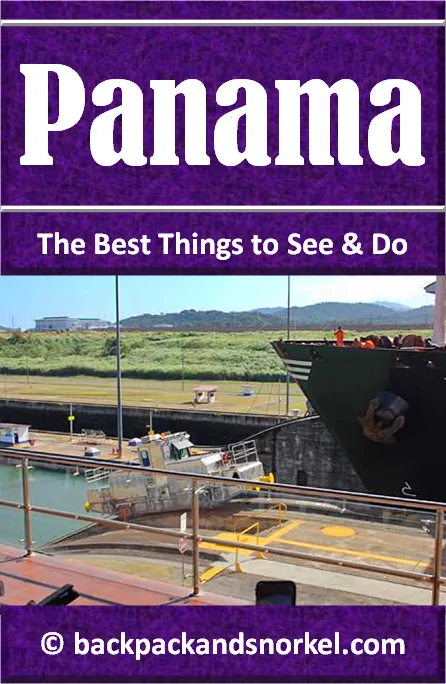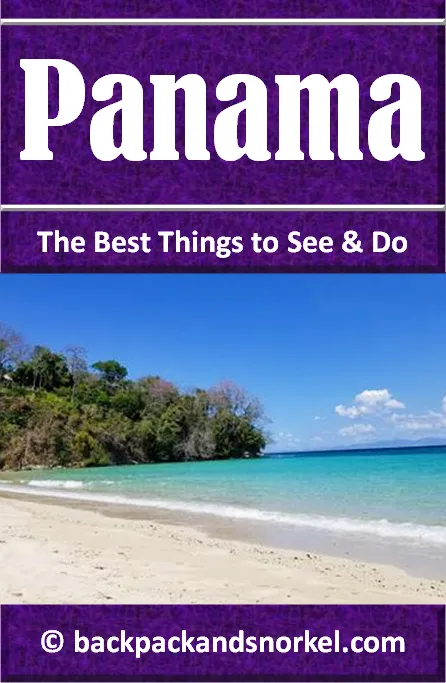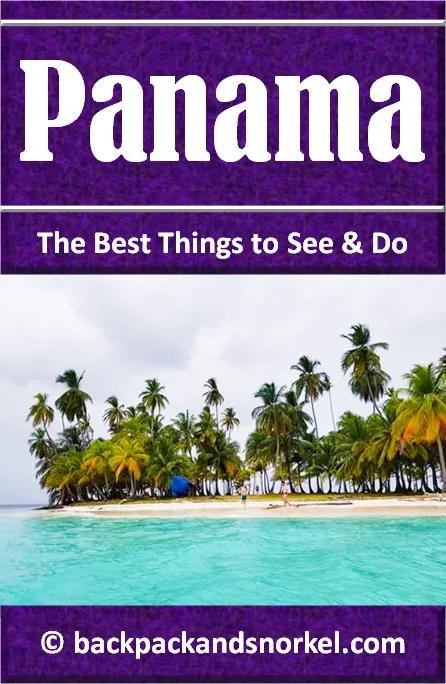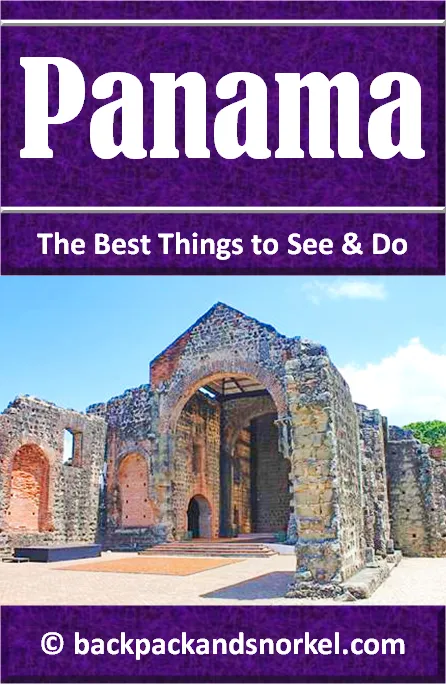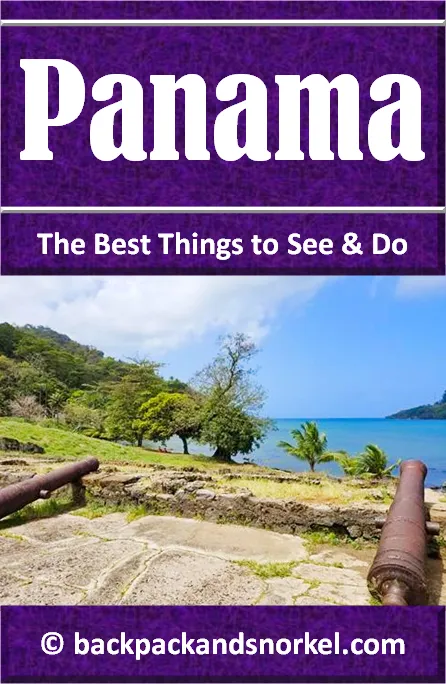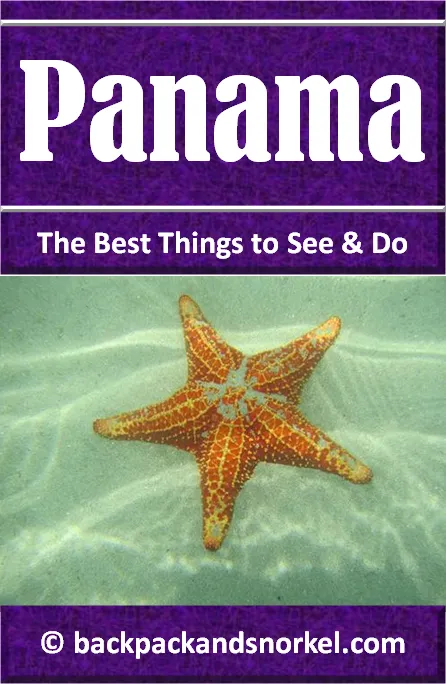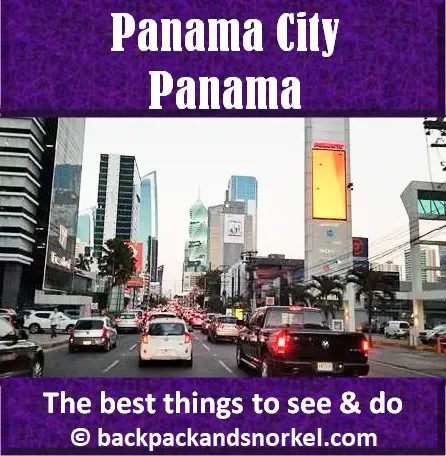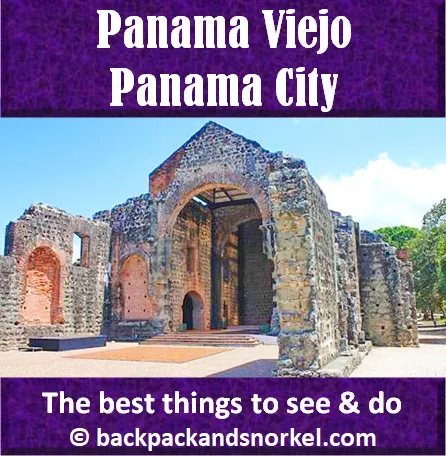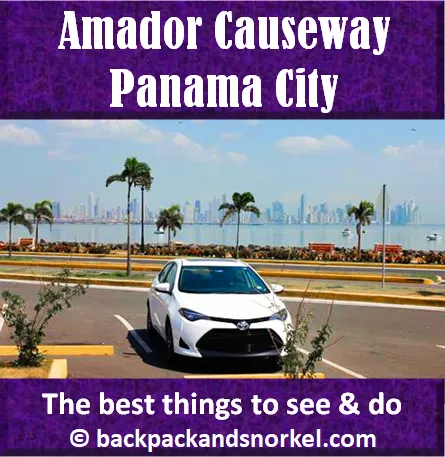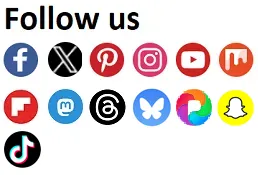Backpack and Snorkel Travel Guide for Two Wonderful Weeks in Panama - Panama Purple Travel Guide
Panama is the most developed country in Central America. It features lots of histpry, tropical rainforest, a large biodiversity and wonderful beaches. This Panama Purple Travel Guide tells you about the best things to see and do during two wonderful weeks in Panama.
INTRODUCTION TO PANAMA
Panama is the most developed country in Central America. In Latin America, only Chile and Argentina were ranked higher in the 2019 Human Development Index. The high living standard is especially visible in the capitol Panama City, but even if you leave the big city for rural areas, you will find roads in often excellent condition and people living in conditions that are far higher compared to other Central American countries.

One source of Panamanian wealth is, you guessed it, the Panama Canal. Being a democracy for more than 30 years, Panama has built the largest financial center in Central America. It certainly has helped that Panama was known as a tax haven for many years and to some extent still is.
Panama is also greatly profiting from being part of the Colón Free Trade Zone, which is the largest free trade zone in the Western Hemisphere.
Panama has a tropical climate and with it comes a large area of tropical rainforest and a large biodiversity. The temperatures rarely exceed 90°F (32°C) for an extended period of time. On top of that, Panama has incredible beaches. Taking all this into account, it is easy understandable that Panama’s tourist industry is constantly growing.
Besides tourism, Panama is also offering generous retirement benefits and has therefore long been a favorite for US, Canadian and European retirees.
Other things to know about Panama:
Capital: Panama City
Flag:

Official language: Spanish
Time zone: EST (Eastern Standard Time), Daylight Savings Time is not observed
Currency: US dollar (the official currency is the Panamanian Balboa. One Balboa is the same as 1 US dollar and only Balboa coins are minted, no bills. With the exception of the 1 Balboa coin, all other Balboa coins are the same size and weight as the respective US coins). Everybody accepts US dollars.
Country code: 507
Population: 4.25 million (2019)
Cars drive on the right side of the road
Internet sites: .pa
Independence from Spain: November 28, 1821
BEST TIME TO VISIT PANAMA
As a country with a tropical climate, Panama has a dry season and a wet season. The driest months are typically December through April and the wettest months May through November.
Be advised that the rainy season is not a total washout, however. You will often have sunny skies for much of the day but there is a good chance for sudden, short-lived but heavy thunderstorms at around noon or in the early afternoon. Some rural areas may be difficult to reach during the rainy season.
As for the temperatures, the difference between daytime temperatures is higher than between the seasons. Please be advised that, the higher the elevation, the cooler it gets.
Here is the climate of Panama City and Las Perlas that you can expect:


Here is the climate of Bocas del Toro that you can expect:
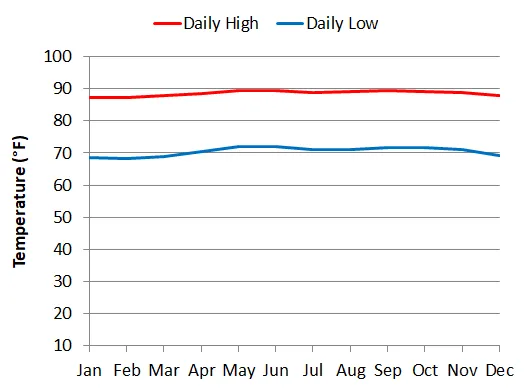
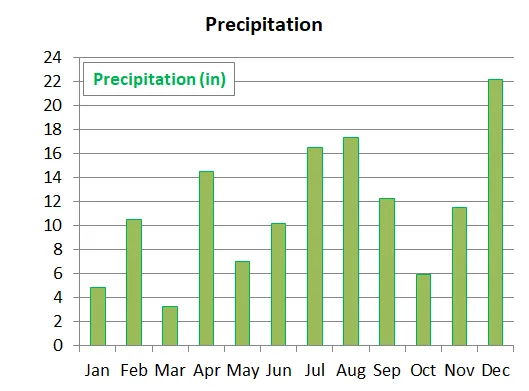
WONDERFUL TWO WEEK ITINERARY FOR PANAMA
To fully appreciate the beauty of Panama, one would likely need to spend at least a month in this country. If you have two weeks, then you will be able to see many of the highlights and, if you like it as much as we do, you will probably want to come back to explore the country even more, or just spend more time on your favorite beaches.
Day |
Night |
|
Sat |
Flight to Panama City (PTY) |
|
Sun |
||
Mon |
Day tour: San Blas Islands (Comarca Guna Yala) |
|
Tue |
drive to Portobelo, Fort San Lorenzo and Gatún Locks; drive to Panama City |
|
Wed |
||
Thu |
Flight to Bocas del Toro; explore Bocas Town |
Fri |
Snorkel at Boca del Drago (Starfish Beach) |
Sat |
Sun |
Mon |
Flight to Panama City (PTY) |
Tue |
Wed |
Thu |
Fri |
Snorkeling at Isla Chapera; Playa Cacique |
Sat |
Ferry to Panama City (PTY) |
Sun |
Flight back home |
We rented a car in Panama City. In general, driving a rental car in Panama is easy. Roads, even in rural areas, are usually well maintained and most Panamanians are not rude or aggressive drivers. Traffic signs like speed limits are frequent and easy to understand. Outside Panama City there are actually not too many cars on the roads which makes for relaxed driving.
In Panama City, however, driving is very much like in big cities in the US. There are way too many cars on the roads and rush hour traffic is plain awful. Avoid it at all costs. Outside rush hour, driving a car is the best way to get to your destinations in Panama City. Parking can sometimes be difficult to find but we were always able to find a spot even if it meant that we had to walk a few city blocks.
Many people suggest Waze as a GPS. After we had some not-so-good experiences with Waze in Costa Rica, we used google maps for the entire Panama trip and had absolutely no problems. Just make sure to save the road maps to our cell phone in advance so that you don’t need an active internet connection while you are driving.
BEST DESTINATIONS IN PANAMA - PANAMA Purple Travel GuideS
Which part of Panama do you want to visit next?
Author: Rudy at Backpack and Snorkel
Bio: Owner of Backpack and Snorkel Travel Guides. We create in-depth guides to help you plan unforgettable vacations around the world.

Other popular Purple Travel Guides you may be interested in:
Like this Backpack and Snorkel Purple Travel Guide? Pin these for later:
